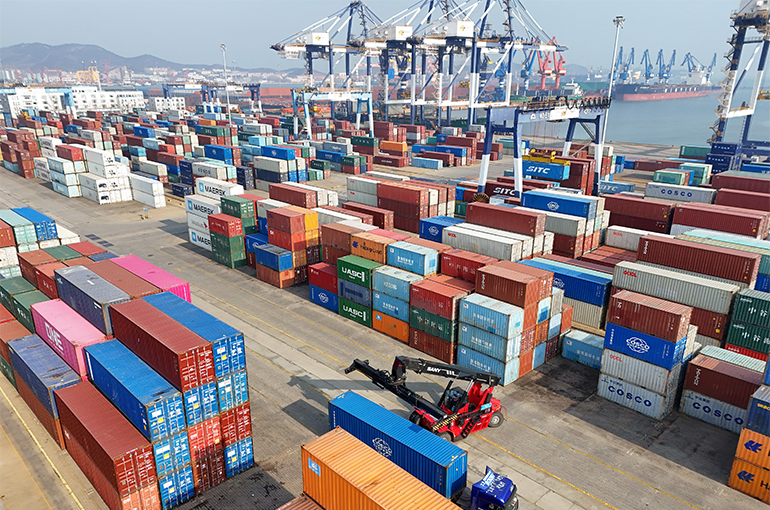 China’s Exporters Form Different Coping Strategies as New US Tariffs Come Into Effect
China’s Exporters Form Different Coping Strategies as New US Tariffs Come Into Effect(Yicai) March 5 -- Chinese exporters taking part in a regional trade show voiced a mixed bag of reactions to the US tariff hike, which came into effect yesterday. Although some are confident that their business will not be affected, many plan to tackle the situation by exploring emerging markets and developing new products to stay ahead of the pack.
"If our US customers expect us to cover half the cost of the 20 percent tariff increase, we will have to stop producing a lot of our bags," a protective cloth bag manufacturer from southeastern Zhejiang province told Yicai at the ongoing 33rd East China Import and Export Fair in Shanghai.
The firm’s profit margins are already razor-thin, as it is a labor-intensive business, so a tariff hike of this magnitude would eat up all its profits, it said. Half of the company’s bags are directly exported to the US, while others reach the US market via European and Southeast Asian partners operating under foreign brands.
Textile manufacturer Hongfeng Technology mainly supplies Europe and Southeast Asia, but the Changxing-based firm is still affected by the tariff increase as some of its products end up in the US through overseas clients, sales manager Chen Jun said at the expo, which is the country’s largest trade fair for textiles, apparel, and light industry products.
Orders have dropped by between 30 percent and 40 percent this year from previous years, said Chen. This is because our overseas customers said earlier this year that changes in US tariffs made them hesitant to place orders, he added.
Other exporters were more confident. “Our products are unique and it is hard to source them elsewhere,” a producer of animation IP-themed merchandise told Yicai at the expo, which is attended mostly by labor-intensive businesses and is co-hosted by provinces and major cities in eastern China. “So even with the tariff increase, we don’t plan to accept our US clients’ requests to share the tariff costs.”
A sock manufacturer that mainly exports to the US, Europe and Japan said its luxury socks have always been priced at the higher end of the market. Although the tariff hike will make its wares more expensive in the US, it should not put too much pressure on the business.
Varying Countermeasures
One clothing manufacturer in eastern Jiangsu province, which mainly exports to the US, is setting up more factories in Southeast Asia to mitigate the pressure from the new tariffs and cut production costs, a sales executive said. The firm is also constantly introducing new products to stay competitive and to protect its profit margins.
"Shifting production to Southeast Asia isn’t an option for smaller companies like ours," the bag manufacturer said. To retain customers, the firm plans to focus on research and design to add more value to its products. Although the US market is irreplaceable, the company will also diversify into emerging markets.
Hongfeng’s strategy is to not only cut costs as much as possible but also to develop new products to become a trendsetter in specific market segments, Chen said.
"After the tariff hike, overseas buyers will inevitably shift some of their regular orders elsewhere, so in order to maintain our customer base, we need to be ahead of the curve. We plan to develop one or two new products every year based on market trends," Chen said.
Chen said he plans to attend more industry trade shows in different countries this year to tap emerging markets. Despite the headwinds, the company has set a 10 percent growth target for 2025.
Editor: Kim Taylor